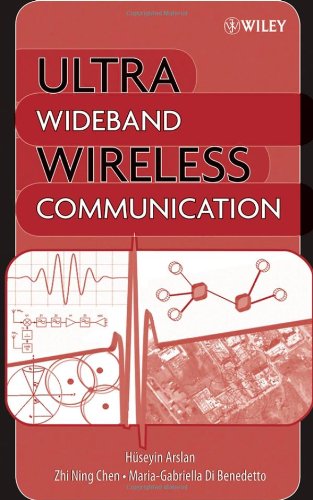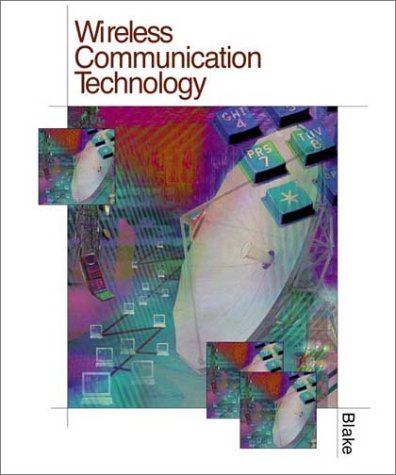Peter Stavroulakis9780470847701, 0470847700
Table of contents :
RELIABILITY,
SURVIVABILITY
AND
QUALITY OF
LARGE SCALE
TELECOMMUNICATION SYSTEMS……Page 5
Copyright……Page 6
Contents……Page 9
List of Contributors……Page 11
Preface……Page 15
Acknowledgement……Page 17
1 Introduction……Page 19
2 . 1 I n t r o d u c t i o n……Page 21
2.2.1 Introduction……Page 23
2.2.2 Reliability Definition……Page 24
2.2.3 The Internet……Page 26
2.2.4 Internet Services and Applications……Page 30
2.2.5 Reliability Assessment Framework……Page 32
2.2.6 Fundamentals of Defects per Million ( DPM)……Page 33
2.2.7 Email Application……Page 35
2.2.8 Web Applications……Page 42
2.3.1 Need for Improved Reliability in IP Over Photonic Networks……Page 49
2.3.2 Network Architectures for IP Over Photonic Networks……Page 51
2.3.3 Protection/ Restoration Schemes……Page 54
2.3.4 Methods for Designing Reliability……Page 56
2.3.5 Implementation Issues……Page 66
R e f e r e n c e s……Page 75
3 . 1 I n t r o d u c t i o n……Page 79
3.2.3 System Architecture……Page 80
3.2.4 Classification of Users……Page 81
3.2.6 Services Provision……Page 82
3.2.7 General Capacity Aspects……Page 83
3.2.8 Survivability Aspects……Page 90
3.2.9 Outage Index……Page 93
3.2.10 Survivability Strategies……Page 96
3.3.1 Introduction……Page 99
3.3.2 Wireless Access Network Architecture……Page 101
3.3.3 A Survivability Framework……Page 107
3.3.4 Survivable Network Design……Page 112
3.3.5 Survivability Analysis……Page 119
R e f e r e n c e s……Page 132
4 . 1 I n t r o d u c t i o n……Page 137
4.2.1 Introduction……Page 138
4.2.2 Architecting Application Adaptation……Page 140
4.2.3 Problem Formulation and Preliminaries……Page 142
4.2.4 Quality of Service Control Design……Page 150
4.2.5 Simulation Results……Page 153
4.2.6 Conclusions……Page 159
4.3.2 The Terrestrial- Satellite Integrated Environment……Page 160
4.3.3 Introducing the QoS Concept……Page 163
4.3.4 QoS Issues in Terrestrial- Satellite Asymmetrical Platform Based on IP Protocol……Page 166
4.3.5 QoS Measurements: A Test Scenario in a Real Multimedia Satellite Platform……Page 179
4.4.1 Introduction……Page 185
4.4.2 Motivation……Page 186
4.4.3 Problems with TCP at the Transport Layer……Page 194
4.4.4 Solution Frameworks……Page 201
4.4.5 The Black Box Approach……Page 203
4.4.6 Complete Knowledge Approach……Page 208
Acknowledgements……Page 216
4.5.1 Introduction……Page 217
4.5.2 A Unified Approach for Evaluation of the Outage Probability in Mobile Cellular Networks……Page 219
4.5.3 Outage Probability in Lognormal Mobile Radio Environments……Page 220
4.5.4 Outage Probability in the Presence of L Rician CCIs……Page 222
4.5.5 Outage Performance due to Nakagami Signals……Page 224
4.5.6 Outage Performance in the Case of Different Statistics between Desired Signal and CCIs……Page 226
4.5.7 Conclusions……Page 229
Appendix A……Page 230
4.6.1 Introduction……Page 231
4.6.2 Estimation Using Pilot Bits……Page 234
4.6.3 Estimation Using Information ( Data) Bits……Page 237
4.6.4 Combined Estimators……Page 244
Appendix……Page 246
R e f e r e n c e s……Page 248
5 . 1 I n t r o d u c t i o n……Page 257
5.2.1 Introduction……Page 258
5.2.2 Home Networking Realization……Page 259
5.2.3 Overview of IEEE 1394……Page 264
5.2.4 Network Architecture of Wireless 1394……Page 268
5.2.5 Wireless 1394 M A C Layer……Page 271
5.2.6 Wireless 1394 PHY Layer……Page 279
5.2.8 Application Extensions and Future Issues of BroadbandWireless Home Network……Page 285
5.3.1 Introduction……Page 287
5.3.2 Drawbacks of Existing Space- Division Switches……Page 288
5.3.3 Switch Reliability……Page 289
5.3.5 Reliability……Page 290
5.3.6 Component- Delay Performance……Page 291
5.3.7 Unicast Maximum Throughput……Page 293
5.3.8 Multicast Maximum Throughput……Page 294
5.3.9 Cell- Delay Characteristics……Page 295
5.4.1 Introduction……Page 299
5.4.2 Benefits of Using a Fuzzy Optimization Approach……Page 300
5.4.3 Fuzzy Approach Description……Page 302
5.4.4 Experimental Results……Page 310
R e f e r e n c e s……Page 313
A . 1 I n t r o d u c t i o n……Page 321
A. 2.2 Planning and Project Management……Page 322
A. 2.3 Network……Page 323
A. 2.4 Services……Page 324
A. 2.5 Operations……Page 325
A. 2.6 After- Use……Page 327
A. 3.2 Telecommunications Services at the Nagano Games……Page 328
A. 3.3 Telecommunication Infrastructure……Page 333
A. 3.4 Maintenance During the Olympics……Page 334
A. 3.5 Results of the Telecommunications Services……Page 336
A. 3.6 Mobile Communications Networks……Page 337
A. 3.7 High- Tech Olympics ( VOD Services)……Page 339
A. 3.8 Conclusions……Page 340
A. 4.2 Making Olympic Preparations……Page 341
A. 4.3 Games- Time Management……Page 349
A. 4.5 The Paralympic Games……Page 351
A. 4.7 Conclusion……Page 352
A. 5.2 Sponsors……Page 353
A. 5.3 Equipment and Services……Page 354
A. 5.4 Venues……Page 358
A. 6.1 Introduction……Page 360
A. 6.2 Planning of the 2004 Olympic Network……Page 361
A. 6.3 Conclusions……Page 367
Index……Page 369







Reviews
There are no reviews yet.